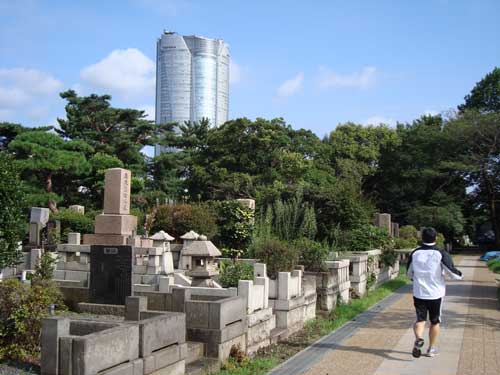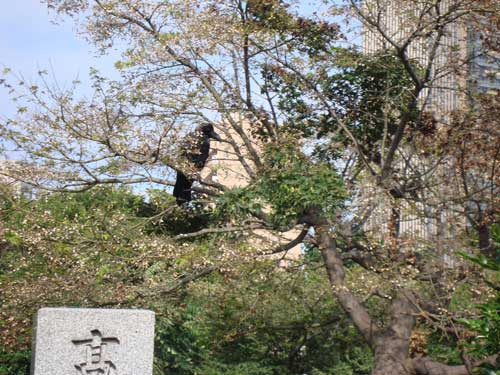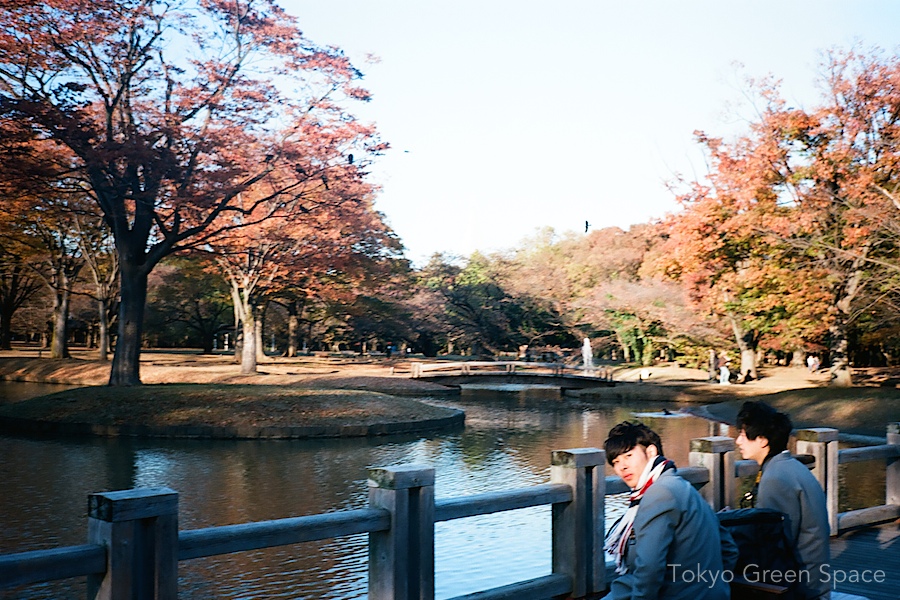crow
Crow Planet’s insights into urban wildness
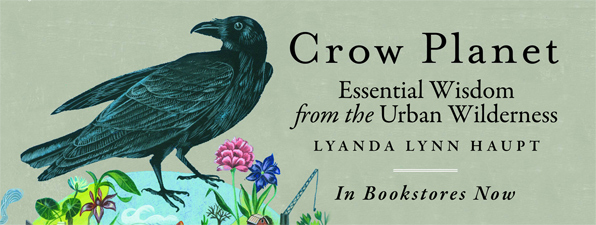
I am reading Lyanda Lynn Haugpt’s Crow Planet, a book about closely observing city crows that offer many insights on urban wildness. Haugpt is part of an urban ecology movement that I identify with. If city dwelling is a given for us– as it is for more than half the world’s population–how can we explore and expand our knowledge of nature from inside the city? I suspect that city birdwatching, like city gardening, connects us both with nature and with each other.
I also enjoyed Marie Winn’s Central Park in the Dark, which explores bird life in New York’s incomparable Central Park. Haughpt’s work goes a step further, by suggesting that we start at our kitchen table, looking out the window with binoculars, and exploring nature on our roofs, outside our doors, and in our immediate vicinity.
I like that Haughpt, a serious birder and wildlife researcher, has chosen the most humble of city birds, and made their stories integral to how we are now changing our views of city life and the relationship between humans and nature. I like her focus on the close observations of the everyday, and admire her narrative power to evoke history, myth, and natural science while reconsidering what city life is and can be.
I am already feeling sad to be close to the end of this inspiring book. Although Tokyo Green Space focuses more on city plants than animals, habitat rather than wildlife, I feel a kinship in her reinterpretation of the familiar and ordinary.
This is one of the blessings of the urban nature project: without the overtly magnficient to stop us in our tracks, we must seek out the more subversively magnificent. Our sense of what constitutes wildness is expanded, and our sense of wonder along with it. (pp 157-8)
Has anyone else read this book? I highly recommend it.
Crows in Tokyo

Crows are everywhere in Tokyo. And they are larger than their US cousins. Many people complain about their aggressiveness and ability to recognize people. Several people have asked me how the urban habitat can repel them, and some urban beekeepers claim that bees chase away crows.
A colleague recently told me about Lyanda Haupt’s recent book, Crow Planet: Essential Wisdom from the Urban Wilderness. I am curious how this wildlife naturalist succeeds in humanizing a bird that most wish were gone.
My colleague reminded me that crows are one of the few urban wildlife that walk on two legs like humans. It’s also funny that in Tokyo, salarymen and the constant black suits are often referred to as crows.
Meeting Yamada Yoriyuki at Kajima

Recently I met with Yamada Yoriyuki (山田順之), Manager of the Office of Global Environment at constructino company Kajima and a leader in bringing biodiversity ideas to Japanese corporations. He showed me the new interactive illustration Kajima created of an integrated sustainable city, where bees pollinate community gardens, school fields are mowed by goats, falcons provide crow control, rivers support animal life, hospitals have healing gardens, and plants and animals contribute to a better environment.
Yamada’s vision for new urbanism is holistic, with the widest variety of wildlife improving human life. Contrary to the government’s minimal regulations, Yamada boldly states, “I am not interested in greening.” Instead of applying green to existing projects, Yamada emphasizes habitat and culture. Habitat requires links between insects and birds, bees and food, trees and birds, clean water and fish. As an anthropologist, I was also pleased to hear Yamada emphasize culture as key to creating social change in cities. Yamada cites the importance of “eight million kami” (ya-o-yorozu no kami or 八百万の神), a Shinto belief in animism and the presence of spirits in an infinite number of natural beings and materials.
In addition to working with Kajima and the Japanese Business Initiative for Biodiversity, Yamada is very hands-on. He explained how he monitors honeybees on Kajima’s Ikebukuro dormitory using GPS and biking along a 2 kilometer radius. From his observations, he sees urban honeybees avoiding park and street trees because pesticides have made them unsafe, and preferring instead small gardens grown by residents.
Yamada also cites the Japanese Pygmy Woodpecker as a key indicator species. Because it travels relatively short distance, urban habitat requires a series of interconnected parks and street trees creating a green web. I find this idea of the ecological connection between large public spaces and individual gardens very inspiring.
I also highly recommend the article he co-authored: Kumagai, Yoichi and Yoriyuki Yamada. “Green Space Relations with Residential Values in Downtown Tokyo: Implications for Urban Biodiversity Conservation.” Local Environment, Routledge Press, Vol. 13, No. 2, 141–157, March 2008.
Why are neighborhood parks so sad?
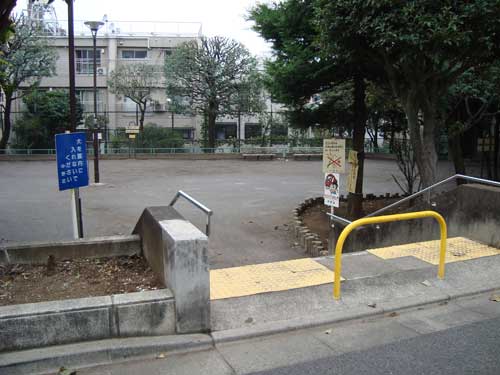
I am struck by how poorly maintained and under-used many of the residential neighborhood parks are. This one, close to where I live, is large, has many mature trees facing the street, and has almost no usage. To call it uninviting and unloved would be an understatement.
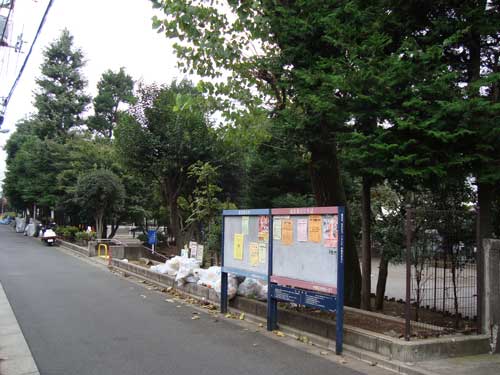
The street side is almost promising. There is a long row of mature trees and a community bulletin board. Next to the bulletin board, and also on the far end of the park, are designated areas to leave your trash. Unfortunately, there is no receptacle for the bagged garbage, so crows and cats pick through the bags and the contents start to disperse.
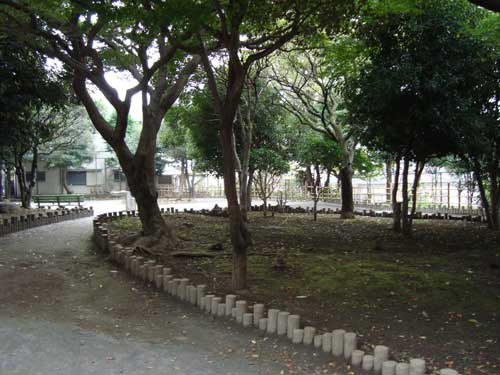
The entrance to the park reveals vast areas of gravel, unplanted beds, and few amenities or attractions. The size of the park only underscores the waste of so much public space going unused. Given how avidly neighbors tend to their tiny gardens and occupy small strips of public space, why are local governments unable to harness this human resource for beautifying and maintaining public space?
I can imagine many other uses for the park: community vegetable gardens, flower contests, rice field, bee hives, food stand, children’s play area, public art-making space. Given limits to local government budgets, maybe there would be a way to attract corporate sponsors and neighborhood volunteers. If more people were attracted to enter the park, I am sure it would be cleaner and more inviting.
After the jump is a photo inventory of the current park assets, mostly aging structures with a surprising amount of trash. During my visit I noticed a small garden crew and two people on a bench.
Aoyama Cemetery
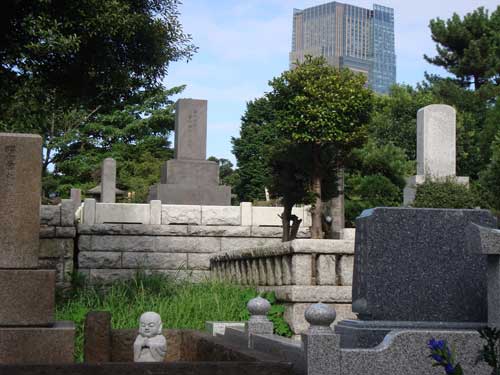
Braving the summer heat, I walked through the huge green space of Aoyama Cemetery in Minato. Despite the approach of the obon holiday, there were few people inside the park, including a solitary runner and a few cars passing through. The cicadas were incredibly loud, and large crows perched in the trees.
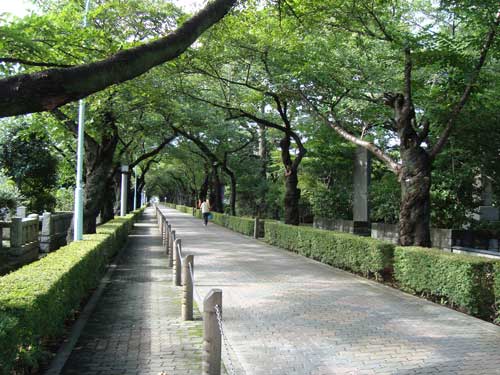
Aoyama Cemetery is Tokyo’s largest (26,000 square meters), with hills, valleys, many trees, and a central lane with 200 cherry trees. The 100,000 graves include Hachiko, famous Japanese politicians and artists, as well as a foreigner section (gaijin bochi).
The cemetery is incredibly central, and provides a mix of natural views and tombs juxtaposed with the sights of new skyscrapers on the periphery. There is an odd resonance between the tombs and the tall buildings in the distance.
